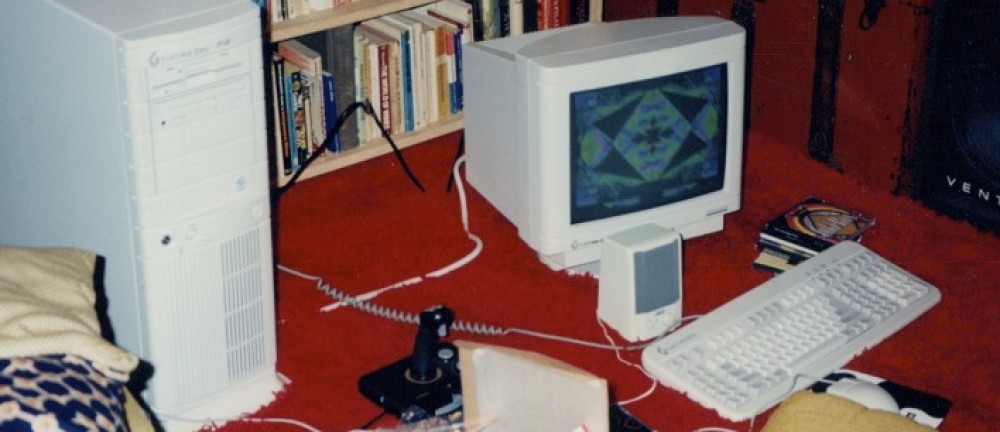Apparently the URL hasn’t been working to get the plugin for FCP to support the Sony DR60.
Here’s a link that works.

Apparently the URL hasn’t been working to get the plugin for FCP to support the Sony DR60.
Here’s a link that works.
YouTube has announced a really extensive API which lets you upload videos, add/update metadata, and do pretty much everything else you’d hope to find in a YouTube API.
Exciting.
The Sony DR60 and the new “Memory Recording Unit” (as part of the HVR-Z7U) return standard M2T files in HDV mode. That’s a problem if you want to use them with Final Cut.
Or, it used to be. Today they’ve released their plugin to rewrap M2T files in Quicktime to work with Final Cut. This was mentioned in the Final Cut 6.0.2 release notes, but was previously unavailable.
Get it here, and enjoy your tapeless workflow. So long Focus, so long …
Vara software has just released a new screencasting application called ScreenFlow. It combines the features of a typical screencasting like SnapzPro or iShowU, with the ability to bring in onscreen video from a camera, as well as some neat 3d transitions and all.
Screencasting is becoming increasingly popular as a teaching tool, and this looks set to make the process simple and very attractive. Cool.
I wasn’t aware Avid was trying to push this as a standard, but Engadget has the news that SMPTE has approved DNxHD as a standard, called VC-3. DNxHD is similar to Apple’s ProRes422, though many folks consider it to be slightly higher quality. It’ll be interesting to see how this gets adopted – having a high quality, cross platform interchange format sure would be nice.
Just plain strange. Apple has now confirmed that they won’t be attending NAB this year, after having recently upgraded to a larger booth to fill the spot vacated by Avid. Recession fears? NAB dying? Who knows. Will Adobe be the next to pull out?
It’s funny, there’s an awful lot of stuff in the US code that would surprise most folks.
For example, in the world of video production, folks often talk about how there are certain buildings that are copyrighted, thus preventing their incorporation into videos. Or else folks say, “it’s a gray area” …
One gets the feeling that it’s in the best interests of the copyright holder to keep this a “gray area,” because confusion leads to capitulation.
Doesn’t seem very gray to me.
(a) Pictorial Representations Permitted.— The copyright in an architectural work that has been constructed does not include the right to prevent the making, distributing, or public display of pictures, paintings, photographs, or other pictorial representations of the work, if the building in which the work is embodied is located in or ordinarily visible from a public place.
I’m working on a more extensive post dealing with some of these issues.
The Adobe Flash plugin for Quicktime seems to only support movies with a duration of 2^24 milliseconds. That’s about 4 hours and 39 minutes. Funny enough, I had reason to compress a 4 hour and 41 minute movie today. The FLV format is supposed to support up to 2^32, using an extended timestamp attribute, but it sure doesn’t seem like the plugin makes use of it. After 16777216 milliseconds, we roll back to zero.
Interestingly though, the files are still valid and playable, they just can’t be indexed properly by the various FLV metadata injectors. And progressively downloading a four hour movie isn’t such a great choice.
The fix? When you’re injecting metadata, watch for the timestamp to roll and then just tack on an extra 2^24 to all the timestamps from there on out. It’s a bit dirty, but it’ll work, since the truth is you’re matching timestamps to byte offsets – once you’ve built your metadata array, the timestamps in video packets don’t matter.
Why didn’t I go to CES? It’s crazyville!
First off, Casio has gotten official with the previously prototyped EX-F1. It’s a still-camera style camera/camcorder with an extra party piece of being able to shoot up to 1200fps (albeit at a tiny resolution). 60fps burst mode for stills and H264 video encoding up to 1080i round out the specs.
Next, Sony has spewed a plethora of new cameras, from HD (HDV and AVCHD) on down to MiniDV (still?). Engadget has the full roundup, as I can’t wrap my head around all the models.
Finally, Samsung has released some odd looking 1080p cameras, the SC-HMX20C, SC-MX20 and SC-DX103. The HMX20C does full raster 1080p at 60fps, slow-mo shooting and an interesting form factor. No word on recording format, though one can surmise an h264 derivative. No price give on the top of the range model.
Of course, CES has also brought a billion new TVs, speaker setups, phones, laptops, etc. Engadget has the full scoop, if you can keep up.